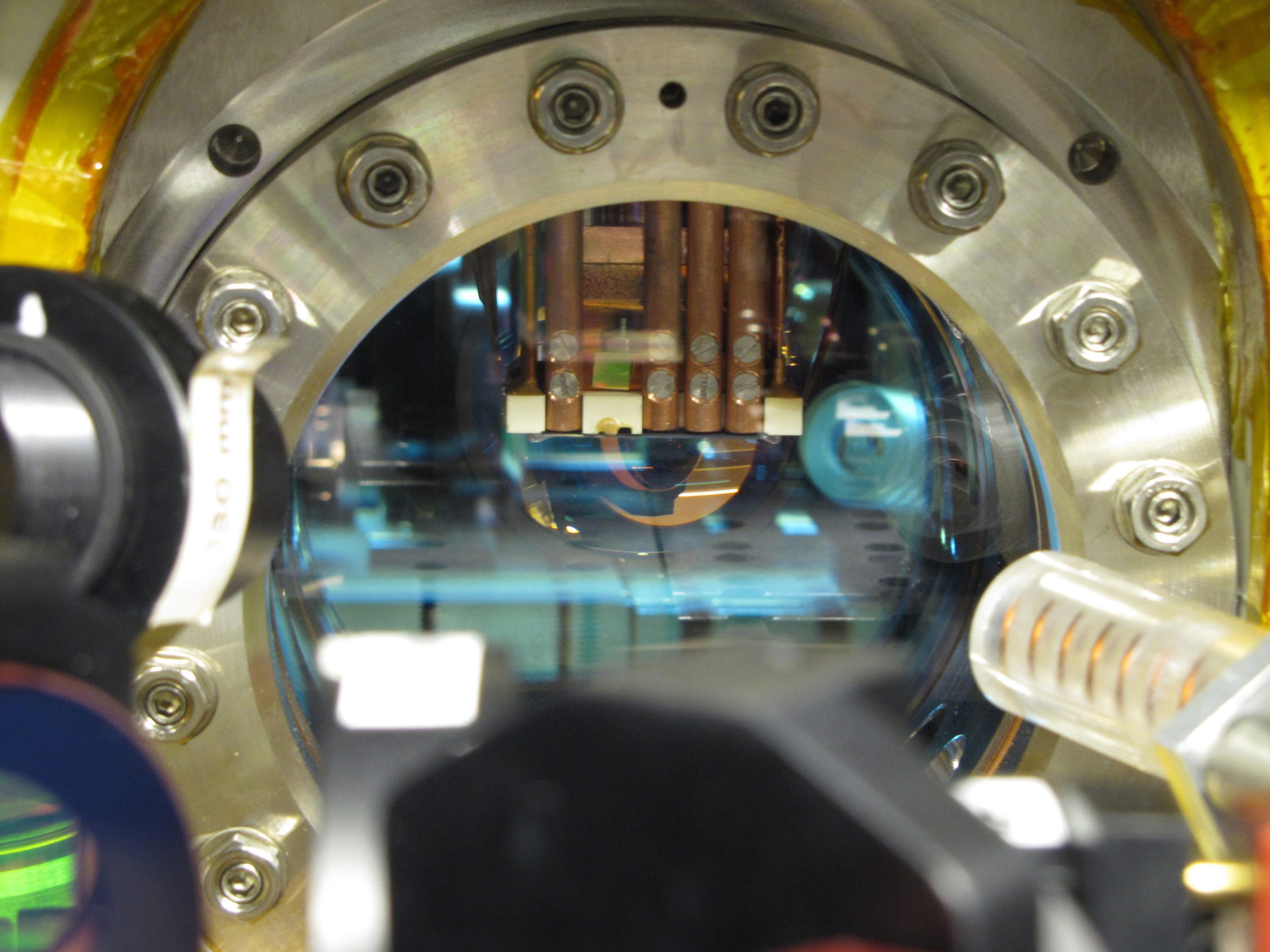Вакуумная камера с кукурузными чипсами. Авторы и права: Томас Швеглер, Технический университет Вены.
Как квантовые частицы обмениваются информацией? Интересная гипотеза относительно квантовой информации была недавно подтверждена экспериментальной проверкой, проведенной в Венском техническом университете.
Если бы вы случайным образом выбрали из толпы человека, который значительно выше среднего, очень вероятно, что этот человек также будет иметь вес выше среднего. Это связано с тем, что, говоря статистическим языком, знание одной переменной часто дает нам представление о другой.
Квантовая физика выводит эти связи на другой уровень, устанавливая более эффективные связи между разрозненными величинами: отдельные частицы или части обширной квантовой системы могут «делиться» определенным количеством информации. Эта интригующая теоретическая гипотеза предполагает, что на вычисление этой «взаимной информации» неожиданно влияет не общий размер системы, а только ее поверхность.
Этот неожиданный результат был экспериментально подтвержден в Техническом университете Вены и опубликован в
“If the system is in equilibrium, then particles in different areas of the container know nothing about each other. One can consider them completely independent of each other. Therefore, one can say that the mutual information these two particles share is zero.”
In the quantum world, however, things are different: If particles behave quantumly, then it may happen that you can no longer consider them independently of each other. They are mathematically connected — you can’t meaningfully describe one particle without saying something about the other.
“For such cases, there has long been a prediction about the mutual information shared between different subsystems of a many-body quantum system,” explains Mohammadamin Tajik. “In such a quantum gas, the shared mutual information is larger than zero, and it does not depend on the size of the subsystems — but only on the outer bounding surface of the subsystem.”
This prediction seems intuitively strange: In the classical world, it is different. For example, the information contained in a book depends on its volume — not merely on the area of the book’s cover. In the quantum world, however, information is often closely linked to surface area.
Measurements with ultracold atoms
An international research team led by Prof. Jörg Schmiedmayer has now confirmed for the first time that the mutual information in a many body quantum system scales with the surface area rather than with the volume. For this purpose, they studied a cloud of ultracold atoms.
The particles were cooled to just above absolute zero temperature and held in place by an atom chip. At extremely low temperatures, the quantum properties of the particles become increasingly important.
The information spreads out more and more in the system, and the connection between the individual parts of the overall system becomes more and more significant. In this case, the system can be described with a quantum field theory.
“The experiment is very challenging,” says Jörg Schmiedmayer. “We need complete information about our quantum system, as best as quantum physics allows. For this, we have developed a special tomography technique. We get the information we need by perturbing the atoms just a bit and then observing the resulting dynamics. It’s like throwing a rock into a pond and then getting information about the state of the liquid and the pond from the consequent waves.”
As long as the system’s temperature does not reach absolute zero (which is impossible), this “shared information” has a limited range. In quantum physics, this is related to the “coherence length” — it indicates the distance to which particles quantumly behave similarly, and thereby know from each other.
“This also explains why shared information doesn’t matter in a classical gas,” says Mohammadamin Tajik. “In a classical many-body system, coherence disappears; you can say the particles no longer know anything about their neighboring particles.” The effect of temperature and coherence length on mutual information was also confirmed in the experiment.
Quantum information plays an essential role in many technical applications of quantum physics today. Thus, the experiment results are relevant to various research areas — from solid-state physics to the quantum physical study of gravity.
Reference: “Verification of the area law of mutual information in a quantum field simulator” by Mohammadamin Tajik, Ivan Kukuljan, Spyros Sotiriadis, Bernhard Rauer, Thomas Schweigler, Federica Cataldini, João Sabino, Frederik Møller, Philipp Schüttelkopf, Si-Cong Ji, Dries Sels, Eugene Demler and Jörg Schmiedmayer, 24 April 2023, Nature Physics.
DOI: 10.1038/s41567-023-02027-1

«Наркоман поп-культуры. Поклонник телевидения. Ниндзя алкоголика. Абсолютный фанат пива. Профессиональный знаток твиттера».






More Stories
Пентагон обеспокоен новыми шпионскими спутниками Илона Маска
Сверхновая, впервые замеченная в 1181 году, выпустила светящиеся нити.
Астрономы ждут, когда звезда-зомби снова взойдет